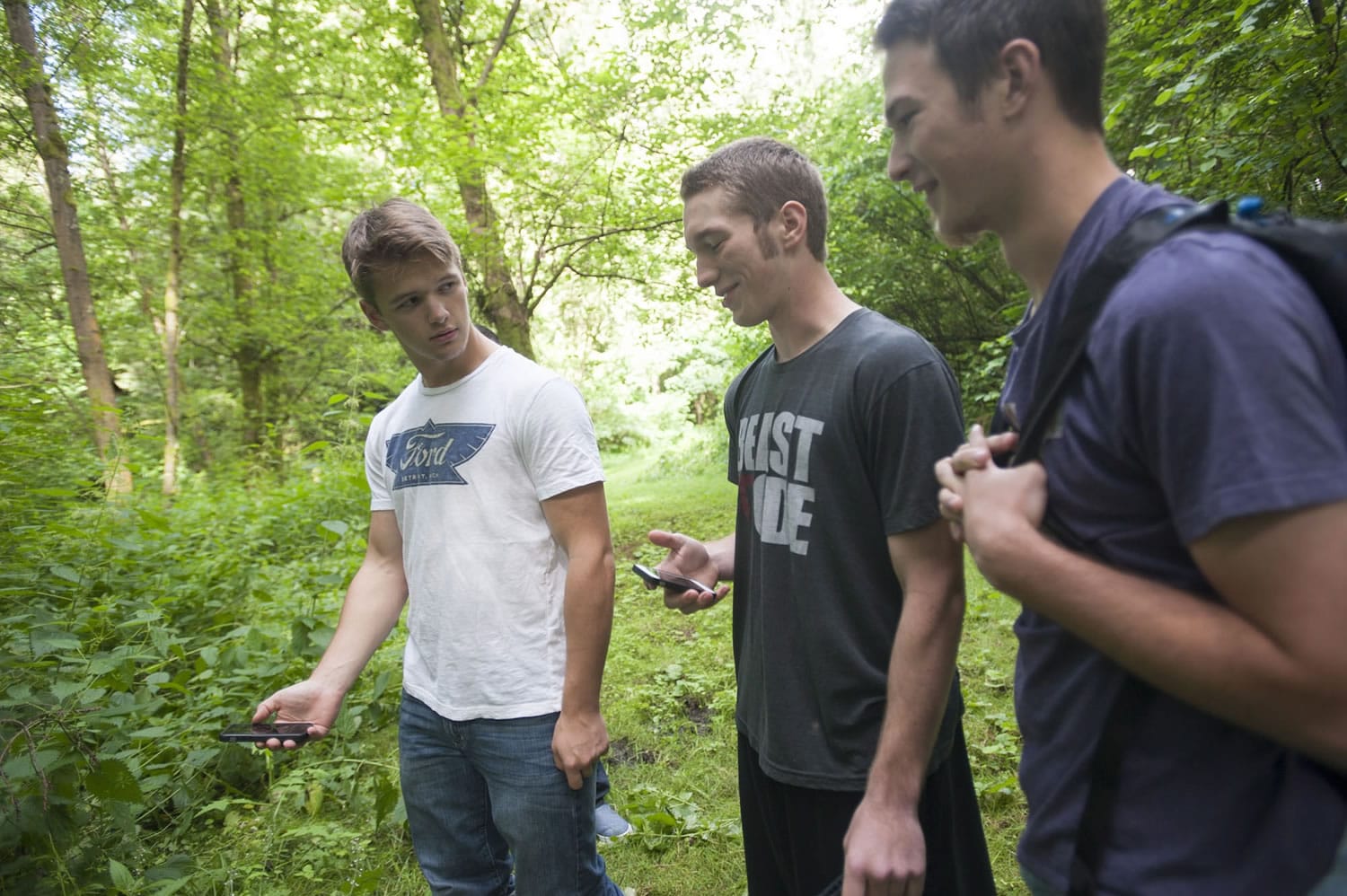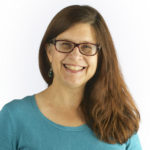Learn more about Washington schools adopting the new science standards at
www.k12.wa.us/science/NGSS.aspx
Learn more about the Next Generation Science Standards at
www.nextgenscience.org
For a summary about Next Generation Science Standards, hover mouse over the photo above and click on the directional arrow to move through photo slider.
BRUSH PRAIRIE — In a century-old forest, teacher Mark Watrin led students along a downhill path and deeper into a thick stand of Douglas fir and Western red cedar.
Minutes earlier, the students conducted field tests in a sunlight-dappled patch of thinner trees interspersed with an undergrowth of ferns, stinging nettle and blackberries.
Learn more about Washington schools adopting the new science standards at
<a href="http://www.k12.wa.us/science/NGSS.aspx">www.k12.wa.us/science/NGSS.aspx</a>
Learn more about the Next Generation Science Standards at
<a href="http://www.nextgenscience.org">www.nextgenscience.org</a>
For a summary about Next Generation Science Standards, hover mouse over the photo above and click on the directional arrow to move through photo slider.
But where the students now stood, the canopy of tall trees filtered the sunlight more. It was deeper, denser, darker.
“What’s different about this part of the forest?” Watrin, a science specialist, asked the Prairie High School Advanced Placement biology students. “Let’s do a light meter reading to see if the light is different here than it was in the more managed section of forest.”
Watrin is on a mission to train teachers in Battle Ground Public Schools about the latest science standards, which must be implemented for all grade levels by the 2017-2018 school year. So far, Washington and about a dozen other states have adopted the new standards.
• The Next Generation Science Standards lay out the core ideas, science and engineering practices and concepts that students at all grade levels should master in preparation for college and careers.
• The standards were developed by educators in 26 states working with partners across the country. New K-12 science standards were developed through a state-led process based on a framework developed by the National Research Council.
• The standards were completed in April 2013.
Currently, Washington high school students must pass a biology End of Course exam to graduate. As the Next Generation Science Standards are implemented, high school students will be required to pass a more comprehensive test that covers biology, along with astronomy, chemistry, geology and physics.
New standards
In a nutshell, the new science education standards involve less rote memorization of facts and terminology and more emphasis on original research and scientific inquiry.
“In the past, the methods of science were a separate chunk, called inquiry,” Watrin explained. “Educators almost treated it like it was separate from other science knowledge. The Next Generation Science Standards do not separate what you’re learning from how you’re learning.”
The new science education will involve fewer worksheets. Instead, students will write journals, reports, posters and media presentations that explain and argue.
There will be less of teachers posing questions with only one right answer. Instead, students will discuss open-ended questions that focus on the strength of the evidence.
Instead of students reading textbooks and answering questions at the end of the chapter, students will summarize information from magazine and journal articles and Web-based resources.
“The actual content of science is probably 90 percent the same as it was,” Watrin said. “In the old standards, there was potential to memorize steps of scientific method and not really understand how it connects to a particular content area, like how a living thing interacts with the environment.”
• The Next Generation Science Standards lay out the core ideas, science and engineering practices and concepts that students at all grade levels should master in preparation for college and careers.
• The standards were developed by educators in 26 states working with partners across the country. New K-12 science standards were developed through a state-led process based on a framework developed by the National Research Council.
• The standards were completed in April 2013.
Washington became the eighth state to adopt the Next Generation Science Standards, also called Washington State 2013 Science Learning Standards. It is up to each state to determine whether to adopt them.
Once the new state-led standards are fully implemented, students will be held responsible for a wider range of science topics, Watrin said. Currently the state requires one year of lab science in high school, but two years of lab science will be required beginning in 2019.
To prepare for the new standards, Battle Ground’s ninth-grade integrated science class now covers astronomy, geology and other disciplines. The district’s high schools currently offer a full-year geology class and may offer semester-length courses on specific disciplines, Watrin said.
Teaching teachers
Although this was Davida Blanton’s AP biology class in the woods, in a way, Blanton was Watrin’s student, too.
Throughout the school year, Watrin has met with the district’s science teachers by grade level to look at the standards and determine how they will be implemented.
“Mark is a mentor, a liaison between administrators and teachers because he has all this real-world knowledge,” Blanton said. “I’ve learned the connection between geology and biology. The land and the life that’s in the land. He’s taught me about the ecology of this area and to identify the plants here,” said the recent Texas transplant.
Watrin added: “You can look at all the plant identification books you want, but it’s best to get out into nature to see it.”
For several summers, Watrin has collected data about dinosaurs through a Montana State University program, the nation’s largest paleontological field program. At summer’s end, he turns in his field notebook to university researchers. He emphasized to the students the importance of keeping accurate field notes.
Watrin, who has taken students to Mount St. Helens to conduct field research, said scientists have set up 136 study plots near the volcano.
“Seeing things often requires many return trips,” Watrin told the students.
In the forest, Watrin asked each student group to measure a baseline plot, 100 feet by 100 feet, for a longtime permanent study by future students. Students used measuring tapes and the compass tool on their smartphones to determine their plot parameters.
Rather than telling students what data to collect, Watrin asked them: “Once we determine our plot, what categories of data should we collect?”
Students made suggestions, and with the help of Watrin, the list of data to be collected included species of trees; number of large trees, dead standing and dead fallen trees; soil and leaf samples and a light reading.
“How do scientists go about collecting this kind of information? Rather than just memorizing species?” Watrin asked.
After a discussion, students collected soil and leaf samples in baggies. Some counted and measured trees. Others measured the light with Watrin’s light meter.
“We want students to struggle with how to collect original data,” said Watrin.




